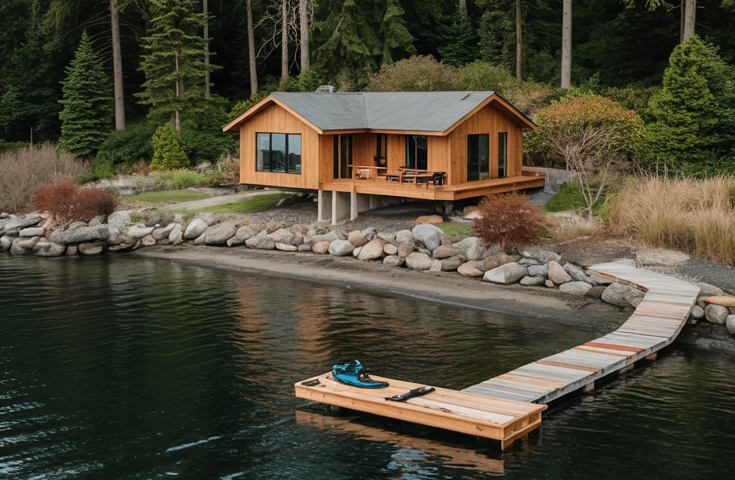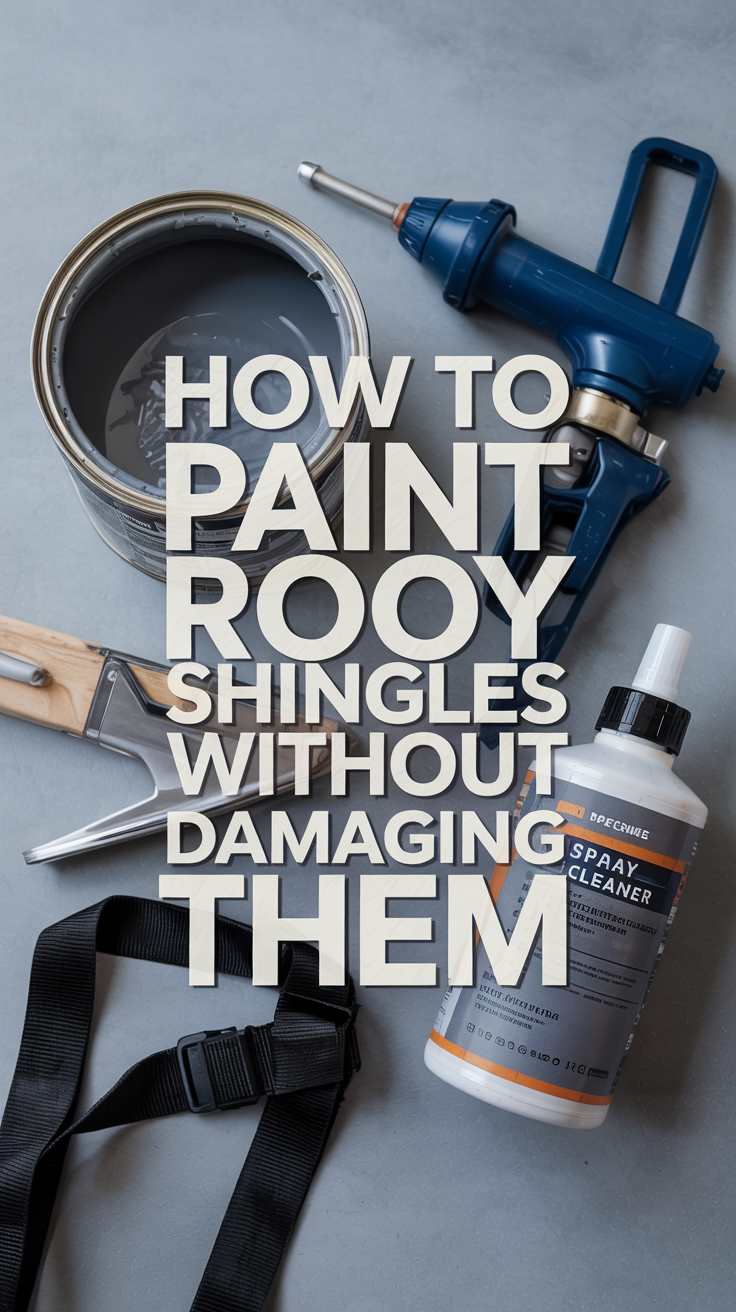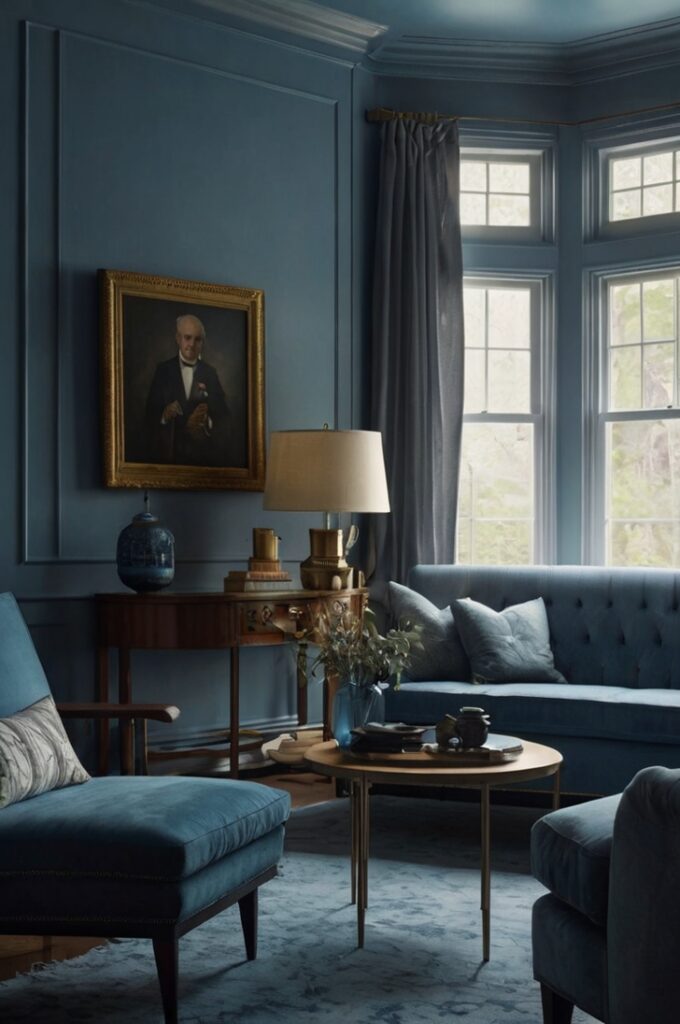Painting your roof shingles may seem like a cosmetic upgrade, but done correctly, it can enhance curb appeal, improve energy efficiency, and even extend the life of your roof. However, if done incorrectly, painting shingles can dramatically reduce their lifespan, trap moisture, or void your roof’s warranty. This guide covers how to paint roof shingles safely—without compromising their structural integrity or durability.
✅ Why Homeowners Paint Roof Shingles
Before diving into the how-to, it’s important to understand why people choose to paint shingles in the first place:
- Aesthetic improvement: Change or refresh your home’s exterior look without a full roof replacement.
- Algae/mildew cover-up: Hide discoloration from mold or mildew.
- Reflective coatings: Reduce heat absorption by using solar-reflective paint.
- Cost-effective facelift: Much cheaper than a full re-roofing project.
🧱 Can You Paint All Types of Roof Shingles?
Not all shingles are created equal, and not all of them should be painted.
| Shingle Type | Paintable? | Notes |
|---|---|---|
| Asphalt shingles | ✅ Yes | Must use 100% acrylic latex paint |
| Wood shingles | ❌ No | Painting traps moisture; better to stain |
| Metal roofing | ✅ Yes | Use rust-inhibiting primers and roof paints |
| Clay/Concrete tiles | ✅ With care | Must use breathable, flexible coatings |
🛠️ Tools & Materials You’ll Need
To paint roof shingles safely, here’s a list of essential materials:
- Roof-safe ladder
- Safety harness and roof anchors
- Pressure washer or soft wash system
- 100% acrylic latex roof paint (UV-resistant)
- Roof primer (optional but recommended)
- Paint sprayer (airless) or long-nap roller
- Painter’s tape/plastic sheeting
- Caulking and patching material (for repairs)
🧼 Step-by-Step: How to Paint Roof Shingles Safely
Step 1: Inspect and Repair Your Roof First
- Look for loose, cracked, or missing shingles.
- Address any leaks or rot before applying paint.
- Ensure flashing is intact and gutters are clear.
Tip: Painting over damaged shingles only masks issues and may trap moisture.
Step 2: Clean the Shingles Thoroughly
Use a pressure washer or a soft-wash solution to remove:
- Dirt and debris
- Moss, mold, and algae
- Mildew stains
Let the roof dry completely for at least 24–48 hours.
Step 3: Protect Surrounding Areas
Use painter’s plastic and tape to cover:
- Gutters
- Siding
- Skylights
- Landscaping (plants, decks, etc.)
This protects your home from paint overspray or drips.
Step 4: Prime the Shingles (Optional but Ideal)
Applying a roof-compatible primer helps:
- Ensure stronger adhesion
- Prevent peeling and flaking
- Even out color tone
Let the primer dry completely as per the manufacturer’s guidelines.
Step 5: Paint Using the Right Technique
Choose a dry day with temperatures between 50°F and 90°F. Apply paint in these ways:
- Sprayer: For even, quick application
- Roller: For more control, especially on smaller roofs
Apply 2 thin coats rather than one thick layer for better durability. Allow the first coat to cure before applying the second.
Step 6: Perform Post-Paint Inspection
- Check for missed spots or uneven finishes.
- Ensure all shingles are fully covered and intact.
- Remove protective sheeting and clean up any overspray.
🔒 Safety Tips While Painting Roof Shingles
- Never work alone—always have a spotter on the ground.
- Use a roof harness system and wear non-slip shoes.
- Avoid painting on windy or rainy days.
- Be cautious of electrical lines near the roof.
❗ Mistakes to Avoid When Painting Shingles
| Mistake | Why It’s a Problem |
|---|---|
| Painting over wet shingles | Leads to peeling and mold growth |
| Using regular wall paint | Lacks UV-resistance and flexibility |
| Skipping primer | Causes early chipping and color fading |
| Ignoring shingle condition | May shorten roof lifespan significantly |
| Using dark colors on older roofs | Increases heat absorption, ages shingles faster |
💡 Best Paints for Roof Shingles
When choosing paint, look for:
- 100% acrylic latex paint
- UV- and mildew-resistant
- Flexible for temperature swings
- Designed specifically for roofing materials
Some brands to consider:
- BEHR Premium® Roof Paint
- Sherwin-Williams Roof Coatings
- Valspar® Roof Paint
🧾 Will Painting Shingles Void My Roof Warranty?
Yes, in many cases it will.
Most shingle manufacturers strictly prohibit painting as it alters the product’s natural characteristics and can reduce ventilation and waterproofing effectiveness.
Always check your manufacturer’s warranty before painting. If your roof is under warranty, painting may void coverage.
🧠 FAQs About Painting Roof Shingles
Q1: How long does painted roofing last?
A properly painted asphalt roof can last 5–7 years before it needs a touch-up, depending on weather conditions.
Q2: Is roof paint waterproof?
Roof paint adds a protective layer, but it’s not a substitute for proper roofing materials. It helps shed water but won’t fix leaks.
Q3: Can you change the color of your roof legally?
Yes, but in HOA or community-regulated neighborhoods, you may need approval before changing roof colors.
Q4: Is white roof paint better for energy efficiency?
Yes! Light-colored or cool roof paints reflect sunlight and reduce interior cooling costs, especially in hot climates.
🏡 Final Thoughts: Should You Paint Your Roof?
Painting your shingles isn’t for everyone, but if done correctly, it can boost your home’s appearance and help protect older shingles. Just make sure to use the right materials, follow safety protocols, and check your roof’s condition and warranty status before starting.
✅ Key Takeaways
- Only paint asphalt or metal shingles—avoid painting wood or untreated clay.
- Use 100% acrylic latex roof paint that’s UV-resistant and flexible.
- Clean, prep, and prime for best results.
- Always prioritize safety and structural integrity over appearance.
- Check your roof warranty before proceeding.





